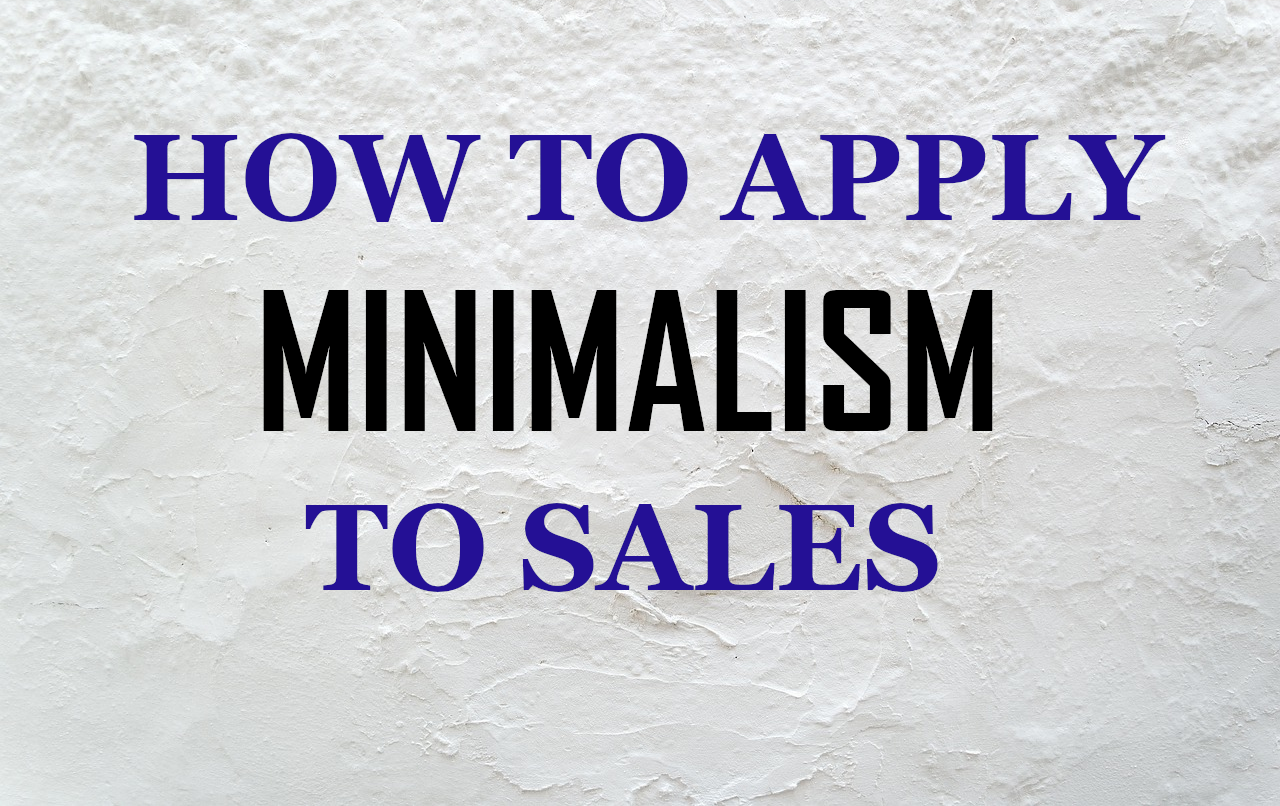How to Apply Minimalist Principles to Sales
In 2014, Marie Kondo published her best-selling book “The Life-Changing Magic of Tidying Up” in the United States, and people started rethinking their buying habits and organizing methods. More and more, people are embracing the philosophy of minimalism, which involves embracing only what’s essential.
Are you interested in the ways that minimalism can improve your life and reduce both anxiety and stress? If so, you’ll want to know how a minimalist approach can streamline your sales processes and make them more efficient.
You may have been using the same approach to sales for many years, but now is the perfect time for change. The world needs more disruptors, and the most successful people are the ones who can adapt at a moment’s notice.
When you embrace minimalism, you become more nimble and open to new ideas. In this article, we’ll explain how you can start applying minimalist principles to sales today.
Reduce the number of leads you pursue
Far too often, salespeople pursue the largest number of leads in order to improve their chances of making sales. Your sales pipeline may be full, but that doesn’t mean that you’re making your job any easier or closing deals more quickly. In fact, a minimalist approach to lead generation and a focus on nurturing may actually serve you better in the long run.
When you take the time to truly qualify and score your leads, you can focus on forming stronger relationships with the people who are more likely to buy from you in the long run. Less is more when it comes to leads.
Think about it this way: if you have 100 “attention points” to distribute to your leads, you are better off giving a smaller percentage of leads 10 points of your effort rather than giving more leads 1 point each because they are likely not to go anywhere. The leads that get warmest are ones that are curated and well taken care of, which is hard to do if you have thousands in the pipeline.
Focus your efforts where they count, and reduce lead clutter. Work on creating a meaningful relationship with your leads for long-term sales success.
Trim your cold emails
You know that when you’re making a cold introduction, you have a lot of information to share with the prospect. However, someone who doesn’t know you won’t want to be bombarded by information.
One of the best ways to start an email conversation is to keep your content simple and pique the person’s interest so he or she naturally wants to learn more about you and your product or service. As a result, you may need to edit your cold emails many times before you finally strike a balance between intriguing and concise. You may even want to share your emails with a trusted colleague and ask where they would cut some words or even whole sentences or paragraphs.
There are some general guidelines for keeping cold email campaigns concise and effective.
First, don’t overstate or convolute your message. An abundance of detail is more likely to be tuned out than to be closely read and considered by a potential customer.
Second, be sure you have included something intriguing about the product/service your company provides. Perhaps it’s a unique approach to something that sets you apart from the competition, or introducing a new facet of your business.
Third, keep it focused. This means there should be a thesis or a central message to the email, not just, “Hi, our company exists. Please give us your business.”
If you are introducing your general business and want specificity, try offering an online discount for new customers, or invite recipients of your email campaign to take advantage of a special offer. This will give your email direction and clarity, which is more likely to sustain engagement from the client.
Talk less
When was the last time you truly took the time to listen to your prospect? Most salespeople are so eager to sell, sell, sell that they forget to listen, and thus they alienate the prospect and lose the deal.
You can take a more minimalist approach to sales by zipping your lips and allowing your prospect to talk. Come to the sales meeting with some curated and important questions, and then allow your prospect to guide you to what they need.
If you have the opportunity to listen to your prospect’s needs, you are at an advantage for addressing them. This will make the client feel they are getting a customized experience instead of the same sales pitch given in a one-size-fits-all capacity. It will also set you apart from many competitors using a traditional approach.
Are you interested in taking a minimalist approach to sales? Which of these tactics have you tried in the past or hope to try in the future?
Latest posts by FollowUp (see all)
- CRM Integrations: Sometimes Less Is More - March 18, 2021
- Becoming an Account Executive in 5 Totally-Doable Steps - January 29, 2021
- 3 Bad Sales Techniques You Should Give Up Right Now - December 28, 2020



